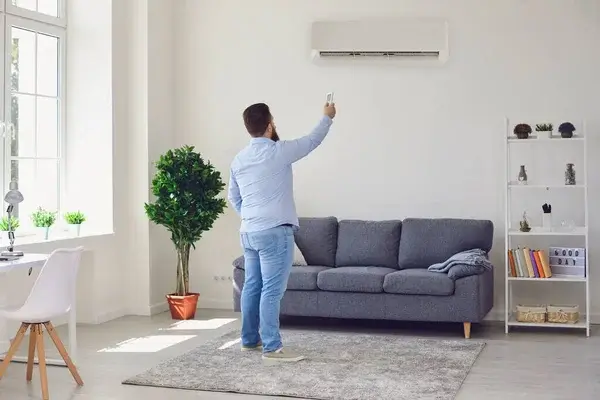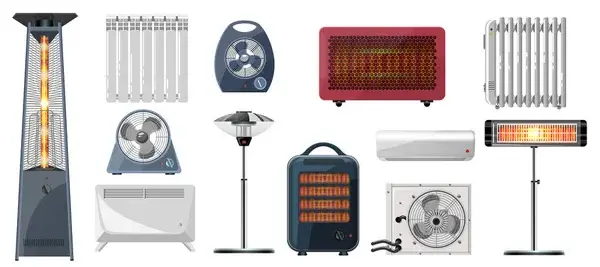- Home
- Why Is My Electricity Bill So High
- What Appliances Use the Most Electricity When Turned Off
what appliances use the most electricity when turned off-How Home Appliances Drain Power in Standby Mode
Have you ever wondered how much electricity your appliances are using when they are in a turned-off state? Many appliances use electricity when not in use, from TVs to refrigerators to washing machines.
This phenomenon is called standby power, and it can account for a significant portion of your energy bill if you're not aware of it. In this blog post, we'll be exploring the appliances that use the most electricity when turned off and what you can do to keep your energy usage low.
We'll be looking at the benefits of taking a few simple steps to reduce the amount of standby power you're using, as well as providing some tips and tricks to help you out. So, if you're looking to conserve energy and save money on your electricity bill, read on to learn more about what appliances use the most electricity when turned off.
1. Standby Power: understand why appliances use electricity even when turned off
Standby power, also known as vampire power or phantom load, is an issue that many households face. This energy is used when electronic appliances are not in use but remain plugged into the electrical outlet. Items such as televisions, entertainment systems, microwaves, and computer peripherals tend to draw energy from the outlet even when turned off, leading to energy waste and unnecessary costs.
To address this issue, it is important to unplug appliances when not in use and plug them into a power strip that can be completely switched off. Doing so will significantly reduce energy consumption and contribute to cost savings. Furthermore, understanding which devices are using the most electricity can identify potential opportunities for efficiency improvements. Overall, taking steps to reduce standby power is a beneficial practice that helps conserve resources while lowering bills.
You may also like to know why is my electricity bill so high?
2. Home Entertainment Systems: TVs, gaming consoles, and other electronics

Home Entertainment Systems, such as TVs, gaming consoles, and other electronics, can pose a significant contribution to your electricity usage and bills if left in the “on” position.
Even when not actively being used, these devices consume electricity for activities such as downloading software updates and data storage. To reduce electricity usage associated with these devices, it is recommended that they be powered off whenever possible.
Investing in a power strip for the entertainment system and switching it off when not in use is an effective way to further reduce electricity costs. An additional cost-saving strategy is to set a timer to ensure that these devices are switched off during periods when they are not needed. By implementing these strategies, you can help protect the environment while also reducing your electricity bill.
3. Kitchen Appliances: microwaves, ovens, dishwashers, and refrigerators
Kitchen appliances are a major energy consumer in the home, even when not in use. Microwaves and ovens use a hefty amount of electricity when in operation; however, their energy consumption may be even greater when they are turned off.
Dishwashers, while used less often, can also be a substantial energy drain when not in use. Refrigerators, however, are the most consistent energy consumer in the kitchen, using electricity both when running and when switched off. It is important to ensure all kitchen appliances are properly maintained and running efficiently to reduce energy consumption and help preserve the environment.
4. Laundry Appliances: washers and dryers
Laundry appliances such as washing machines and dryers are significant consumers of energy, even when not in use. This is due to the presence of heating elements that remain energized regardless of whether or not the appliance is in use.
To prevent energy loss and save money over time, it is recommended to unplug the appliance or use a power strip that can be easily switched off when not in use. In addition, purchasers should consider purchasing an energy-efficient model of laundry appliance, as the reduced energy consumption will result in cost savings in the long run.
By taking proactive steps to reduce their personal energy usage with laundry appliances, consumers can lower their overall energy footprint and make a meaningful contribution to more sustainable living.
50 more ways to conserve energy at home
5. Heating and Cooling Systems: air conditioners, furnaces, and water heaters

Heating and cooling systems, such as air conditioners, furnaces, and water heaters, are among the highest energy consumers when in standby mode. By investing in energy-efficient systems, you can help reduce your energy usage and keep your home at a comfortable temperature. It is also important to maintain these systems regularly.
This will ensure they reach their set temperatures quickly and efficiently while avoiding any costly repairs or replacements that can result from a lack of maintenance. Taking proactive steps today to reduce your energy consumption can benefit the environment and your wallet for years to come.
6. Home Office Electronics: computers, printers, and scanners
Home office electronics, including computers, printers, and scanners, need to be managed carefully if they are not to use up power unnecessarily in their standby mode. Computers, for instance, may consume up to 80 watts of electricity when not running but simply left powered on.
Printers can similarly use as much as 40 watts, while scanners may require even more energy depending on their size and features. To avoid electricity wastage from these types of appliances when not actively being used, it is important to switch them off completely. In this way, efficiency is increased and costs reduced.
7. Lighting: LED bulbs, halogen bulbs, and incandescent bulbs
Lighting plays an important role in energy consumption within the home. LED bulbs, halogen bulbs, and incandescent bulbs are the most common options to choose from and each has different energy requirements and desired effects.
LED bulbs are the most energy-efficient of all three but have a higher upfront cost. Halogen bulbs are more energy efficient than incandescent bulbs and produce less heat, yet still require more energy when compared to LEDs. Incandescent bulbs have the lowest upfront cost but consume the most energy, making them the least energy-efficient option.
Additionally, all three bulb types draw some electrical power even when not in use, known as phantom load, so it is important to unplug them whenever they are not needed. Conscientious lighting choices and power management can reduce overall energy consumption, thus saving money and becoming more environmentally friendly.
8. Outdoor Appliances: pool pumps, sprinklers, and lights

Outdoor appliances such as pool pumps, sprinklers, and lights can make a significant contribution to energy consumption on a property, even when they are shut off. This is because these items may still be drawing power from a process called phantom or standby power.
In order to ensure optimal energy efficiency and reduce energy expenditure, it is important for property owners to consider installing an outdoor timer that will switch off the appliances when not being used. Additionally, unplugging these items when they are not in use is also beneficial.
For maximum efficiency, property owners should opt for ENERGY STAR-certified pool pumps and sprinklers. By following these steps, property owners can enjoy the advantages of outdoor appliances while minimizing energy usage and costs.
9. Unplugging: minimizing electricity used by these appliances when not in use
Electronic devices, such as computers, TVs, and game consoles, consume electricity even when they are turned off. To reduce electricity usage in these scenarios, it is recommended to unplug the device from its power source when it is not needed.
A timer can also be set up to automatically switch off the device after a period of inactivity. Furthermore, investing in power strips that allow multiple appliances to be switched off simultaneously is another way to reduce energy consumption. Taking proactive steps like these can help reduce electricity bills and conserve energy for the good of the environment.
10. Energy Saving Tips: simple ways to reduce electricity usage in the home
In a typical home, the appliances and electronics that use the most electricity when turned off are idle televisions, computers, gaming systems, and other electronics. To save energy and lower energy costs, here are 10 energy-saving tips that you should use in the home:
1. Make sure all appliances are plugged into an outlet that is easily accessible
2. Make sure all appliances are properly installed and in good working order.
3. Check your appliances regularly for signs of wear and tear, such as burnt-out lights or broken parts.
4. Make sure all appliances are turned off when not in use.
5. Use energy-efficient appliances and materials when possible.
6. Consider installing timers on certain appliances to help control energy usage.
7. Consider purchasing energy-saving light bulbs and other lighting fixtures to help reduce energy usage.
8. Utilize energy-saving features on your furnace, water heater, air conditioner and other major appliances to help save money on your energy bill.
9. Consider taking advantage of rebates, tax credits and other incentives available from your local utility company to help offset the cost of purchasing energy-efficient products and services.
10. Utilize energy-efficient practices such as insulating your home, sealing windows and doors, replacing old roofing materials and installing high-efficiency HVAC systems.
11. Consider purchasing a programmable thermostat that can be used to control the temperature in your home and adjust it accordingly based on your needs.
12. Utilize energy-efficient lighting in your home such as compact fluorescent lights (CFLs) and LED lights for a more environmentally friendly lighting solution that also saves money on your energy bill.
13. Consider purchasing a programmable timer or smart thermostat that can be used to automatically turn off certain appliances when they are not in use, helping to save money on your energy bill.
14. Utilize energy-saving features on your water heater, furnace and other major appliances such as a programmable thermostat or smart thermostat to help save money on your energy bill
what appliances use the most electricity when not in use-summary
In conclusion, it is important to take proactive steps to reduce energy consumption. This includes unplugging certain appliances after use even if they are off and being aware of the power consumption of appliances when purchasing them.
Through these simple steps, it is possible to reduce energy consumption and costs. It is essential to be mindful of energy efficiency as this is an essential factor in reducing one's overall environmental impact and saving money over time. It should also be noted that many governments offer discounts for high-efficiency appliances and home improvements that can aid in reducing energy consumption.